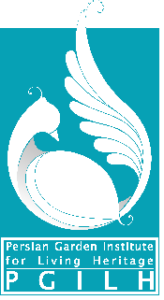
The 2003 Convention, which entered into force in 2006, has now reached early adulthood and so is on the cusp of reaching full maturity. Since I have been involved in its story from before the 2003 Convention was actually drafted, it is interesting for me to see how some of what was envisaged during its early development has come to fruition and exciting to see some wholly unexpected and very positive outcomes in terms of innovative approaches towards safeguarding this heritage. It is not always easy to quantify the contributions of the Convention, not all of which are positive as we should openly acknowledge. Moreover, without any doubt, it is true that much of what it has led to in terms of safeguarding measures represent actions and activities that might well have happened without it. Despite this, it is now hard to imagine the world without this Convention. On balance, I firmly believe that a world in which this Convention exists in order to empower ICH bearers to safeguard their heritage and, by extension, their ways of life is a better one than a world without it. As we all know, the traditional bearers of this heritage have safeguarded and will continue to safeguard their ICH elements, but they also often face major challenges in this and they can benefit greatly in this from the support that governments, NGOs and other actors can give them in within this framework.
One really important achievement of this treaty has been to raise awareness at all levels – governmental, societal and community – that these traditional practices, performances, knowledge and know-how exist, have a heritage value and deserve official recognition and support. Moreover, it also makes it clear that the communities and groups associated with this heritage need to be supported and their rights protected if the heritage is to remain viable in the future. It has also provided a formal framework in which national policies can be developed to provide support for a range of measures for safeguarding this heritage and, importantly, for facilitating the safeguarding activities of bearers and their communities. In some countries where there is a high degree of collaboration between bearers and government officials, this has led to the development of extremely innovative and creative approaches that have definitely benefited from official support in both financial and moral terms.
On a global scale, there is no doubt that the Convention also articulates in very practical terms the international goals and priorities relating to human and cultural rights, the value of cultural diversity and sustainable development. Of course, no treaty framework is ideal since it is based on the agreement of States and is, inevitably, a reflection of their perceived interests and a compromise between these. Inevitably, also, there is a great potential for tension within a treaty dealing with heritage elements that are not only embedded in the cultural traditions of diverse groups, often ethnic and cultural minorities, and the notion of a universal heritage value. At the same time, the high degree of participation by bearers and their communities called for in this Convention is by no means easy to achieve in a primarily (inter-)governmental framework. It is, however, gratifying to observe now that channels of communication to enable this participation are being put in place that never existed before, and that NGOs are often playing a central role in mediating this process.
Indeed, the whole question of the place accorded to non-governmental actors in the 2003 Convention is one of the most exciting (if, at times, frustrating) aspects of this treaty and I believe it is one of those that are most likely to lead to developments in the future. These developments should be of value to cultural communities and groups but also to offer a wider space for NGOs to operate as partners with them, and with governments, in safeguarding activities. In addition, they will also have the capacity to influence the development and implementation of international law in other areas, in particular human rights law. The periodic reporting framework based on the Overall Results Framework now requires States Parties to report on the direct involvement of the communities, groups and individuals in various safeguarding activities and on how far their policies are inclusive. Speaking directly to the question of participation, we can hope that this will feed into their activities on the ground since it is not possible to gather the required data set without a direct engagement with ICH bearers and related NGOs/CSOs. From their reports, we are already seeing that implementing the Convention has led in some countries to building participatory relationships between government officials and bearer communities, and we can hope that this is a growing trend.
Probably one of the greatest challenges in this respect has been, and will continue for some time to be, finding a clearly defined and legitimized role for accredited NGOs within the intergovernmental operation of the Convention. This is beginning to take shape very slowly, and the inclusion of six NGO representatives among the 12 members of the Evaluation Body that make recommendations on nomination files to the Representative and Urgent Safeguarding Lists, as well as requests for International Assistance, is a very positive step. This is particularly so given how far the States Parties have reserved the international activities of this treaty to themselves. The fact that the ICH NGO Forum now delivers a report as an agenda item for the Committee meetings is another encouraging sign. However, we must not be complacent and accredited NGOs need to keep pushing the range of possible roles that we can play in an expanded mandate. For example, we are peculiarly well placed to provide information on the status of inscribed elements and impacts of safeguarding on them by conducting field visits, to offer advisory services to the Secretariat and the States Parties, to support the EB in the evaluation process, and to continue to act as a bridge between governmental actors, bearer communities and related civil society organizations. The recent Reflection on Article 18 and the sharing of good practices has included the role of NGOs in the discussion, albeit in terms that are more limited than we would like, and this presents a possible wedge issue for the NGO Forum to increase our visibility within the Convention’s international mechanisms. I believe that this is one important area in which the treaty will develop over time. Another obvious and inescapable one is in the area of digital technologies, in particular AI, and the potential value they can bring to ICH safeguarding as well as the pitfalls. This represents an issue that the Committee and many, if not most, of the current experts and even NGOs will find very challenging to respond to alone. For that reason, I would also like to see some mechanism by which the voice of young people can be heard much more clearly in the intergovernmental process so that future policies better reflect their aspirations and needs.
Janet Blake,
Director, Persian Garden Institute for Living Heritage
Tehran, October 2023.
Download: Janet Blake – Persian Garden Institute for Living Heritage NGO.pdf

